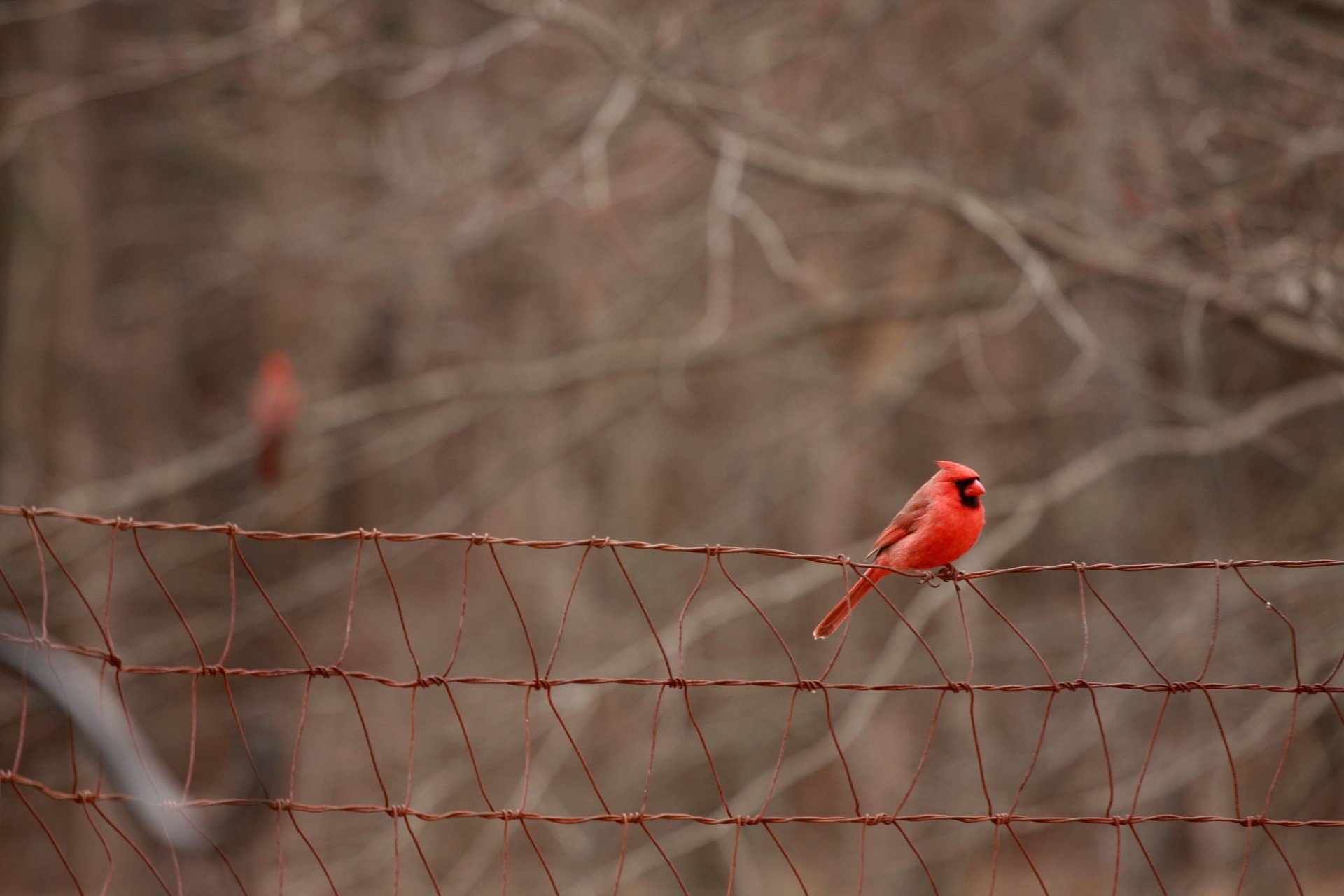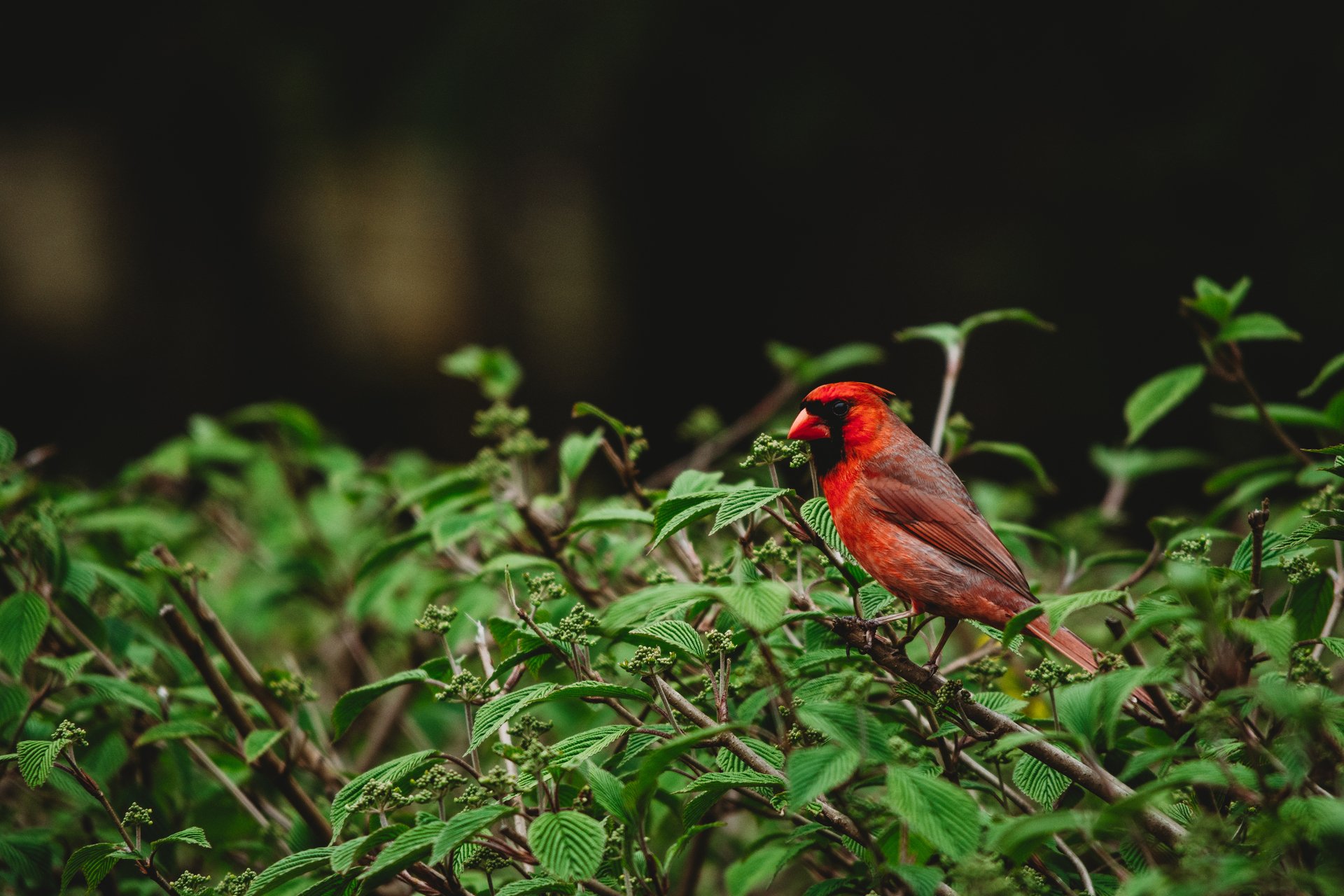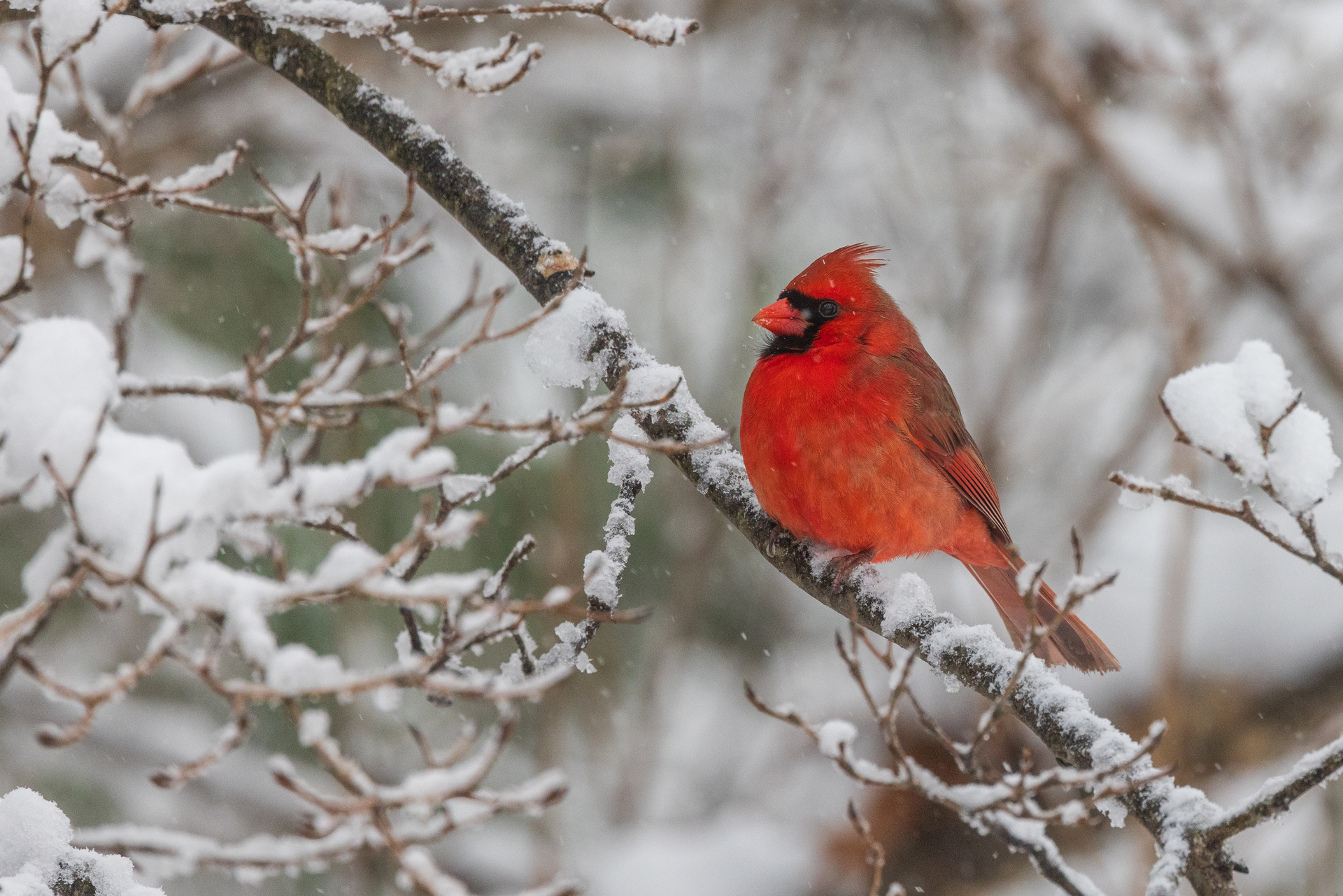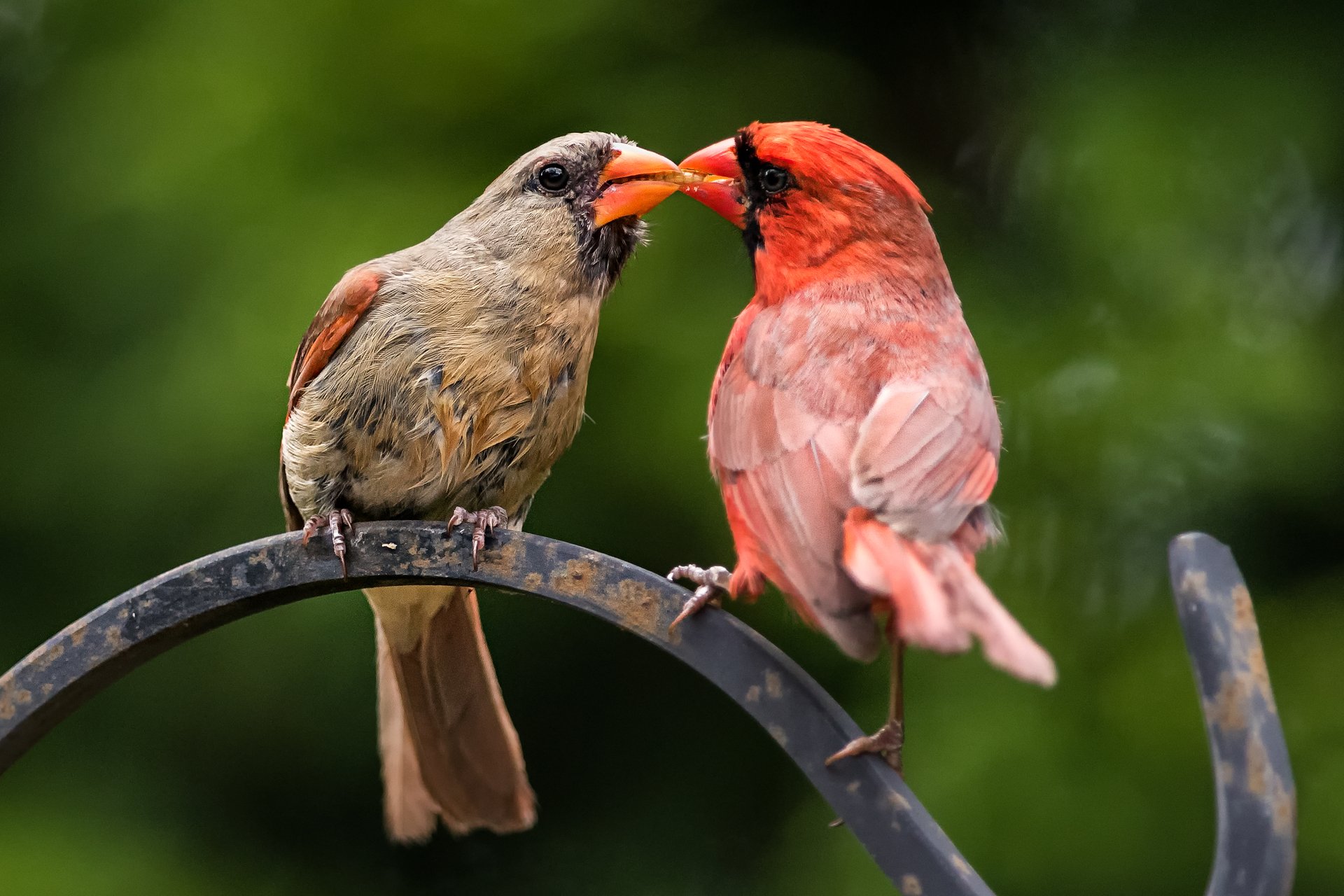Northern Cardinals
Northern cardinals bring splashes of vivid color to the grays and browns of a winter garden. Cardinals are year-round residents in Massachusetts, and they use their bright, powerful beaks to crack open stubborn seeds and to slice open sugary fruits to help them survive the coldest months of the year. Come spring, their cheerful caroling can be heard in almost every neighborhood and farm.
How to Identify Northern Cardinals
Male vs Female Cardinals
The male northern cardinal is unmistakable, thanks to his rose-red plumage, pointed crest, and black mask. The female cardinal has a more subdued fashion sense, preferring pale tan and brown with a few rosy accents on the crest, wing, and tail. Both sexes have the same heavy, bright orange bill.
Northern Cardinal Behavior
Cardinals often retain the same mate from one season to another, with males and females remaining together during the winter months. Despite this pair bonding, though, cardinals are not terribly social birds and rarely form flocks, even during the winter when many other birds do.
Rather than walking, cardinals hop, whether on the ground or from branch to branch, and they eat a mixture of insects, plant buds, seeds, and fruits. Fruit and seeds predominate during fall and winter.
Northern Cardinal Song
How Mass Audubon is Supporting Birds in Massachusetts
Mass Audubon works at our wildlife sanctuaries and beyond to ensure that the nature of Massachusetts continues to thrive. By scientifically monitoring Massachusetts birdlife, Mass Audubon informs important conservation decisions and launches targeted initiatives to help at-risk species. In addition, fostering healthy habitats, supporting native species, and educating people about the importance of nature conservation is critical to our success. Learn more about our work
How You Can Support Birds in Massachusetts
Once a rare bird in any season in New England, the increasing popularity of backyard bird feeders and the rise of suburbia have allowed cardinals to become common year-round in Massachusetts over the past fifty years. They are now stable or increasing in all seasons.
Mass Audubon supports birds like the Northern Cardinal every day, but we couldn’t do it without the support of our 160,000+ members.
Help support Northern Cardinals, and birds like them, by becoming a member today.
Upcoming Bird Programs
See MoreBeavers and Birds at Pleasant Valley
-
Pleasant Valley Wildlife Sanctuary, Lenox
-
Wednesday, July 31
6:00-7:30pm
Adults
Early Birders
-
Felix Neck Wildlife Sanctuary, Edgartown
-
Thursday, August 1
8:00-9:30am
Adults
Birding in a Changing Climate: Daniel Webster
-
Daniel Webster Wildlife Sanctuary, Marshfield
-
Thursday, August 1
8:30-10:30am
Adults
Stay Connected
Don't miss a beat on all the ways you can get outdoors, celebrate nature, and get involved.






